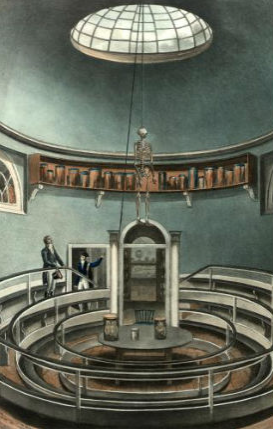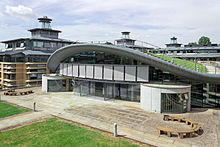Search by topic
- archaeology
- architecture
- bricklayer
- Building of Local Interest
- carpenter
- church
- crime
- dressmaker
- fire
- general labourer
- Great Eastern Railway
- listed building
- medieval
- oral history
- Public House
- Rattee & Kett
- Roman
- scholar
- school
- Then and Now
- tudor
- women
- work
- world war one
- world war two
Search by text
 The old Anatomical School, Queen's Lane
The old Anatomical School, Queen's LaneThe Anatomical School, Queens’ Lane
History of the Anatomical School, Queen's Lane
The New Guide to Cambridge of 1831 describes the School as small but conveniently fitted up for the delivery of Lectures on Anatomy and Medicine. ‘Here is a Museum, containing a large collection of rare and valuable preparations, including the Museum of the late Sir Busick Harwood and a set of beautifully wrought wax models, recently imported from Naples, at a very considerable expense.‘
More information can be found on the University’s Department of Physiology web site:
https://www.pdn.cam.ac.uk/about-us/history/anatomy-past-and-present
The Professor of Anatomy from 1817 to 1865 was Rev. William Clark. The Anatomy Act of 1832 was used for the first time in Cambridge in November 1833 when Clark arranged with Trinity parish officers to dissect the body of a Lincolnshire pauper named Porter who had died in the parish whilst receiving relief under the Poor Law. On the evening of Nov. 30 a meeting was held at the Trinity schoolroom to discuss the transfer of the body and its implications for the poor people of the town. The meeting got out of hand and a mob went to the Anatomical School to try to recover the body. They threw bricks through the windows and stormed the building. They could not find the body and within an hour the mob were driven away by members of the university. James Somerville, Inspector of Anatomy at the Home Office was placed in a difficult position; his role was to ensure a supply of bodies but in Cambridge at least, Clark believed that the 1832 Act could not be made to work. In 1834 and 1835 three bodies were shipped from the Woolwich prison hulks but that was not enough to allow the students opportunities to practise. In 1835/6 Clark was forced to suspend his lectures for want of bodies. The ad hoc arrangement for a supply of bodies from the Woolwich hulks continued even though this was arguably illegal. (See M Weatherall, Gentlemen, Scientists and Doctors: Medicine in Cambridge 1800-1940, pub. 2000. pp42ff)
Contribute
Do you have any information about the people or places in this article? If so, then please let us know using the Contact page or by emailing capturingcambridge@
License
 This work is licensed under a Creative Commons Attribution-NonCommercial-ShareAlike 4.0 International License.
This work is licensed under a Creative Commons Attribution-NonCommercial-ShareAlike 4.0 International License.












